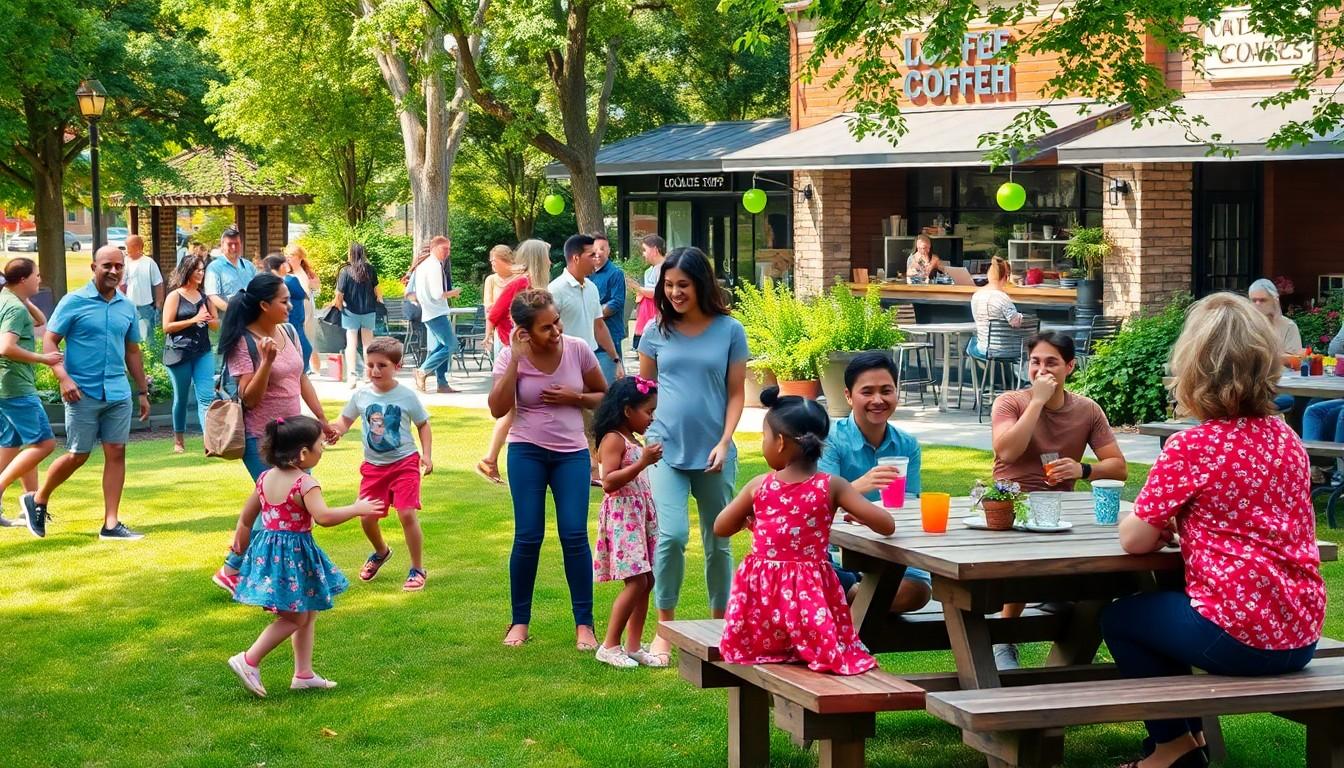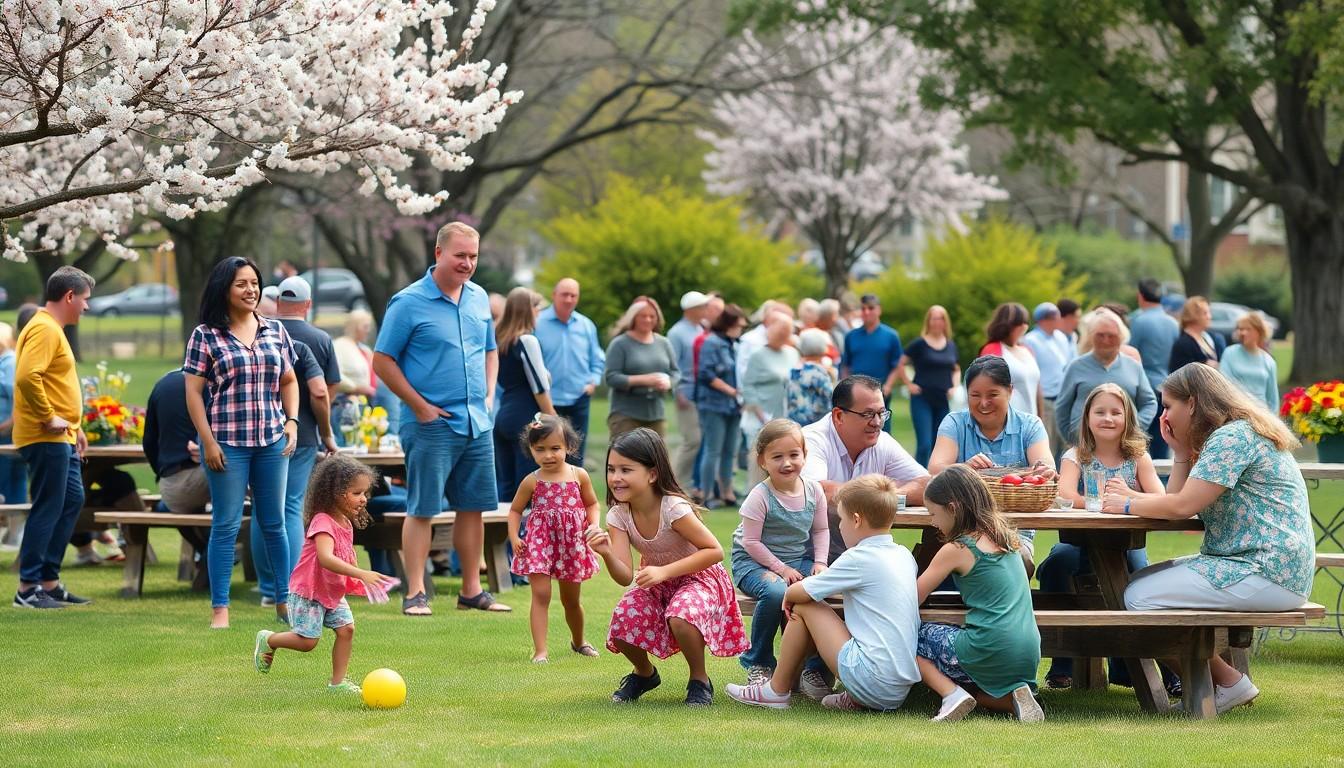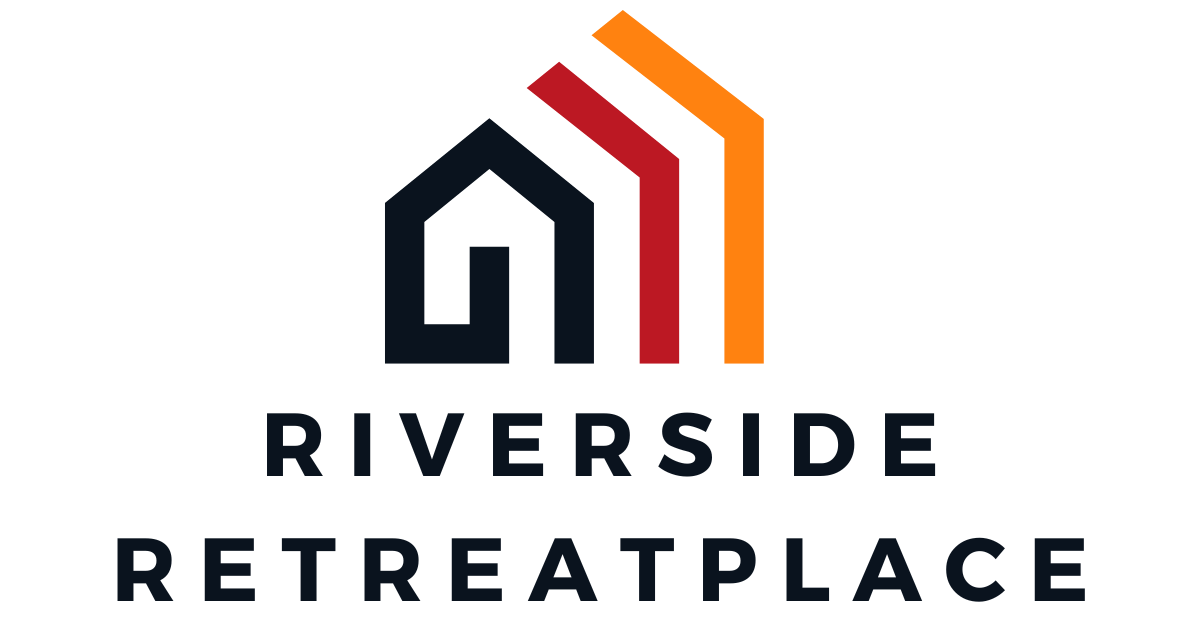
Community Real Estate: Transform Your Lifestyle with Vibrant Connections and Modern Amenities
In today’s bustling world, the concept of community real estate is like finding the perfect avocado—ripe, satisfying, and just what you need. It’s not just about buying a house; it’s about investing in a lifestyle that brings people together. Imagine living where neighbors become friends and every block feels like a small-town gathering.
Community real estate goes beyond four walls; it’s about creating spaces that foster connection and collaboration. Whether it’s a cozy coffee shop around the corner or a park where kids play, these neighborhoods offer a sense of belonging that’s hard to find elsewhere. So why settle for a cookie-cutter home when you can dive into a vibrant community that feels like a warm hug? Get ready to explore how community real estate can transform not just your address, but your entire way of life.
Community Real Estate
Community real estate involves more than homeownership; it creates an environment that nurtures social interactions and strengthens neighborhood bonds. This concept shapes a lifestyle where residents can thrive together.
Definition and Importance
Community real estate refers to properties designed to foster connections among residents. Strong communities enhance the quality of life through shared spaces and amenities. Investing in community-oriented properties leads to a sense of belonging, making it more than a financial venture. In such environments, individuals can experience safety, engagement, and collaboration. These elements play a critical role in community well-being and satisfaction.
Key Features
Key features of community real estate include diverse amenities and thoughtfully designed shared spaces. Local parks provide outdoor enjoyment while fostering social interactions. Coffee shops offer residents a meeting place for building friendships. Walkable neighborhoods enhance accessibility, encouraging physical activity and public engagement. Community events, such as farmers markets or festivals, create opportunities for residents to gather and celebrate. These distinctly valuable components shape vibrant, interconnected areas, drawing more people to invest in community living.
Benefits of Community Real Estate

Community real estate fosters connections, enhancing not just living experiences but also local economies. Understanding its advantages reveals why investing in such properties makes sense.
Economic Impact
Community real estate contributes significantly to local economies. Increased foot traffic encourages local businesses to flourish. Additionally, property values tend to rise as community bonds strengthen. Studies show that neighborhoods with robust social connections see a boost in listing prices by 10 to 15 percent. Sellers benefit from higher demand, and buyers gain from investing in properties with appreciating values. Jobs may increase as businesses expand, providing employment for residents. Overall, when communities thrive together, everyone reaps the economic rewards.
Social Cohesion
Community real estate promotes social cohesion among residents. Shared spaces, like parks and community hubs, invite diverse community members to gather. Regular neighborhood events create opportunities for meaningful interactions. Local initiatives often lead to friendships, reducing feelings of isolation. Moreover, studies indicate that cohesive neighborhoods improve quality of life, making residents feel safer and more supported. The sense of belonging experienced in tight-knit communities encourages long-term residency, leading to stable, engaged populations. In essence, community real estate nurtures not just homes but also lasting relationships.
Challenges in Community Real Estate
Community real estate faces several challenges that can impact its growth and sustainability.
Regulatory Issues
Regulatory issues often hinder the development of community-focused properties. Zoning laws sometimes restrict the creation of mixed-use spaces, limiting opportunities for local businesses and community interaction. Local governments may impose stringent regulations that complicate the building process and increase costs. These barriers can deter developers from investing in community-oriented projects. Additionally, navigating permits and approvals can take a significant amount of time, delaying the establishment of amenities that enhance community living.
Market Trends
Market trends frequently influence the viability of community real estate. Economic fluctuations can lead to reduced buyer demand in certain neighborhoods. Understanding shifts in demographics, including the preferences of millennials and retirees, is crucial for successful community development. Changes in consumer behavior and preferences greatly affect the types of amenities that residents value. Properties with inadequate infrastructure may also struggle as remote working becomes commonplace, altering the importance of walkability and proximity to local services. Staying ahead of these trends ensures the success of community real estate projects in an evolving market.
Successful Community Real Estate Projects
Successful community real estate projects exemplify the benefits of fostering connections and enhancing local economies. Case studies highlight innovative designs that promote social interactions and increase the quality of life.
Case Study: The 606 Trail
The 606 Trail in Chicago showcases a transformative community project. This elevated park spans 2.7 miles and connects several neighborhoods through green spaces and recreational areas. The project revitalized underutilized rail lines, creating walkable pathways, bike lanes, and areas for community events. Economic growth followed, with local businesses experiencing increased foot traffic. The city reported a property value increase of 10 to 15 percent in adjacent areas, illustrating the project’s impact on the surrounding community.
Lessons Learned
Successful community real estate projects yield valuable insights. Engaging the community early in the design process fosters a sense of ownership and investment among residents. Ensuring diverse amenities meets various needs enhances the project’s appeal. Projects should prioritize walkability, as accessible neighborhoods promote interaction and connection. Strong governance and adaptive policies help navigate regulatory challenges. Ultimately, these lessons contribute to the sustainability and success of community-oriented developments.
Future Trends in Community Real Estate
Emerging trends in community real estate shape its future, focusing on sustainability and technology integration.
Sustainable Development
Sustainable development plays a crucial role in community real estate. Communities prioritize eco-friendly designs that reduce environmental impact. Green building materials, energy-efficient appliances, and renewable energy sources become standard. These practices enhance residents’ quality of life while preserving natural resources. Additionally, creating shared green spaces fosters interactions and encourages outdoor activities. Neighbors benefit from enhanced health, reducing overall societal costs associated with healthcare. Community real estate developments that incorporate sustainability trends often experience increased interest from buyers. Studies show properties in eco-friendly neighborhoods command higher market values, consistently outperforming traditional developments.
Technology Integration
Technology integration significantly transforms community real estate dynamics. Smart home features, such as security systems and energy management tools, enhance resident convenience and safety. Communities embrace innovations like mobile apps for event planning and communication among neighbors. Public Wi-Fi in shared spaces encourages collaboration and engagement, promoting community spirit. Furthermore, property management systems utilize data analytics to improve maintenance and service delivery. As communities adapt to these technological shifts, they attract younger, tech-savvy buyers who value connectivity. The incorporation of technology not only enhances daily living experiences but also strengthens community ties, leading to a more engaged and connected neighborhood.
Connection and Collaboration
Community real estate represents a shift toward living environments that prioritize connection and collaboration. By investing in these vibrant neighborhoods, individuals not only enhance their quality of life but also contribute to stronger local economies and social bonds.
As communities evolve with sustainability and technology, the potential for enriched living experiences grows. Those who embrace this lifestyle find themselves part of a supportive network that fosters lasting relationships and a sense of belonging.
Ultimately, community real estate isn’t just about finding a house; it’s about choosing a way of life that nurtures both personal and communal well-being.
